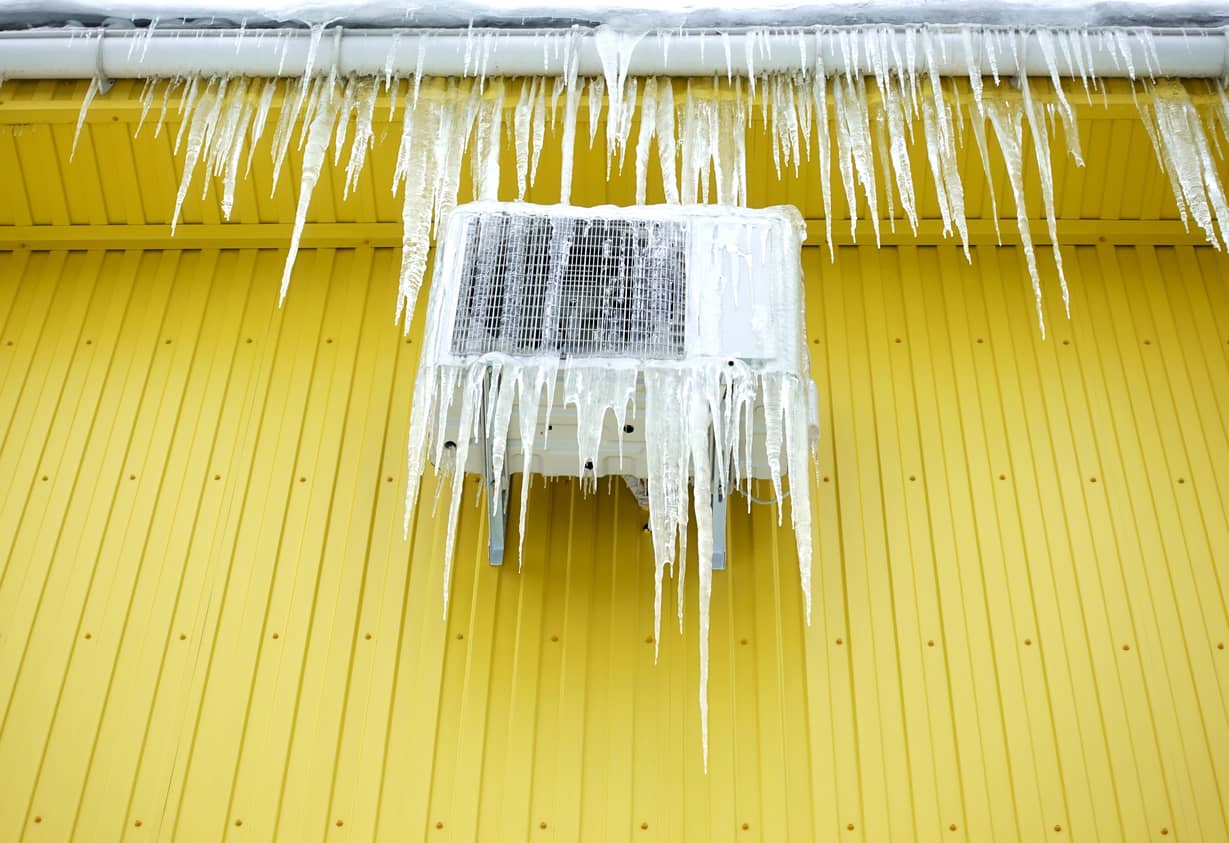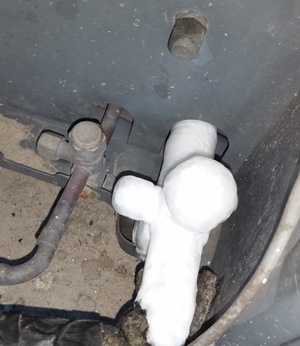How to Deal With a Frozen AC Pipe - Critical Measures for Restoration
How to Deal With a Frozen AC Pipe - Critical Measures for Restoration
Blog Article
Have you been interested in insight Why Is Ice On My Outside Air Conditione?

Intro
Discovering that your air conditioner pipeline is frozen can be worrying, particularly during hot summer months when you rely on your ac system one of the most. Recognizing what to do in such a scenario is critical to prevent more damage to your cooling system and ensure your comfort indoors.
Recognizing the Causes
Numerous factors can contribute to the freezing of an air conditioner pipeline. Comprehending these causes can help you address the problem properly.
Absence of Airflow
One typical cause of an icy air conditioner pipe is inadequate air movement. When the air movement over the evaporator coil is limited, it can create the coil to drop below freezing temperature, causing ice formation on the pipe.
Reduced Refrigerant Levels
Not enough refrigerant levels in your air conditioning system can also result in a frozen pipe. Reduced refrigerant levels can cause the pressure in the system to drop, leading to the freezing of wetness on the evaporator coil.
Cold Weather Conditions
In chillier climates, freezing temperatures outside can add to the cold of air conditioning pipes. If your a/c device is not effectively insulated or if there are leaks in the ductwork, cool air can infiltrate the system, triggering the pipeline to ice up.
Dirty Air Filters
Unclean or blocked air filters can restrict airflow in your air conditioning system, resulting in various problems, consisting of an icy pipeline. It's important to change or clean your air filterings system on a regular basis to make certain proper air movement and prevent ice accumulation.
Indicators of a Frozen Air Conditioning Pipe
Recognizing the signs of an icy AC pipe is essential for punctual activity.
Minimized Airflow
If you see a significant reduction in air movement from your vents, it might suggest a frozen pipeline.
Ice Buildup on the Pipe
Visible ice accumulation on the cooling agent line or the evaporator coil is a clear sign of a frozen a/c pipeline.
Strange Sounds from the Unit
Unusual audios, such as hissing or bubbling, originating from your air conditioning device can signal that there's ice present on the pipe.
Immediate Actions to Take
When confronted with an icy AC pipeline, it's necessary to act promptly to avoid further damages to your cooling system.
Switching off the air conditioning
The primary step is to turn off your a/c to prevent the system from running and worsening the issue.
Checking for Blockages
Examine the location around the indoor system for any obstructions that might be blocking air movement, such as furnishings or drapes.
Defrosting the Pipe
You can utilize mild approaches like placing towels soaked in warm water around the icy pipeline to aid thaw it slowly.
Safety nets
Taking safety nets can assist prevent future incidents of a frozen air conditioner pipe.
Regular Maintenance Checks
Set up normal upkeep talk to an expert HVAC specialist to ensure that your air conditioner system is running effectively.
Changing Air Filters
Frequently replace or clean your air filters to stop air movement limitations and maintain optimum performance.
Insulating Exposed Pipes
If your air conditioner pipes are subjected to cool temperatures, take into consideration protecting them to prevent freezing during winter months.
Looking For Professional Help
If DIY methods fail to settle the problem or if you're uncertain regarding how to proceed, it's ideal to look for aid from a certified HVAC service technician.
When DIY Methods Fail
If your efforts to thaw the pipeline or address other problems are not successful, it's time to contact a professional.
Relevance of Hiring a Professional HVAC Technician
A licensed HVAC professional has the expertise and tools required to detect and fix problems with your air conditioner system safely and properly.
Verdict
Managing a frozen a/c pipeline can be an aggravating experience, yet knowing exactly how to react can aid reduce damages and recover comfort to your home. By comprehending the causes, identifying the signs, and taking timely action, you can successfully resolve the issue and prevent future incidents.
Frozen AC Line: Why It Happens & What To Do About It
A frozen AC line can be a rather peculiar sight in a place like Phoenix, Arizona where nothing ever freezes. In this post, we’ll discuss what makes an air conditioner line frozen – and what you can do about it.
Dirty Air Filters
Did you know that you should be cleaning or replacing your air filters on a monthly basis? Failing to do this can result in airflow issues that, in turn, cause your evaporator coils and lines to freeze over. You’ll notice a buildup of ice on both components, although the buildup on your pipes will, of course, be more evident unless you open your air condition up to reveal the coils.
What To Do About It
Give your air filter a good cleaning if it’s reusable. If not, replace the filter outright. Next, switch your air conditioner’s fan setting on and leave it there for 2-3 hours. This will draw warm air in, helping to thaw your evaporator coil. You can also check out this article for some tips on cleaning the coils themselves if you’d like to speed the process up. Before you switch the unit back to its normal state, make sure the supply vents are completely unobstructed and free of dust or other debris.
If you keep having this issue even after replacing your filters regularly, contact a local HVAC repair company and have them inspect your evaporator coil, ductwork, and any other components that may be at fault. If you live in the Phoenix, Arizona area, give American Home Water and Air a call.
Low Refrigerant Levels/Leakage
What To Do About It
Contrary to what air conditioner “recharge” companies often tell their clients about refrigerant, it should never need to be simply refilled. You see, refrigerant runs in what experts refer to as a “closed loop.” Refrigerant really shouldn’t be leaving that loop. If it is, you’ve got a leak.
Paying someone to come and pump more refrigerant into your system (aka “recharge” it) isn’t the solution. Doing that will simply kick the can down the road. Besides, refrigerant leaks can be harmful to the environment and people in your home.
Rather, you need to take care of the leak with the help of a technician. Check out this article for some more information about dealing with air conditioners that are leaking refrigerant. Before you contact a technician, switch your thermostat to the off position. Then, switch the fan setting on and let it run for 2-3 hours so the unit can thaw.
Improper Temperature Setting
Improper temperature settings can also cause a drop in your air conditioner’s pressure. What many people don’t realize is that air conditioners are actually designed to run when temperatures have fallen above roughly 60 degrees Fahrenheit. If you run the unit when it’s cold outside, you’ll run into many issues, including frozen components.

We are very intrigued by Have a Frozen AC Line? Here’s How to Fix It and I really hope you liked our piece. Sharing is caring. Helping people is fun. We appreciate reading our article about Have a Frozen AC Line? Here’s How to Fix It.
Click Here Report this page